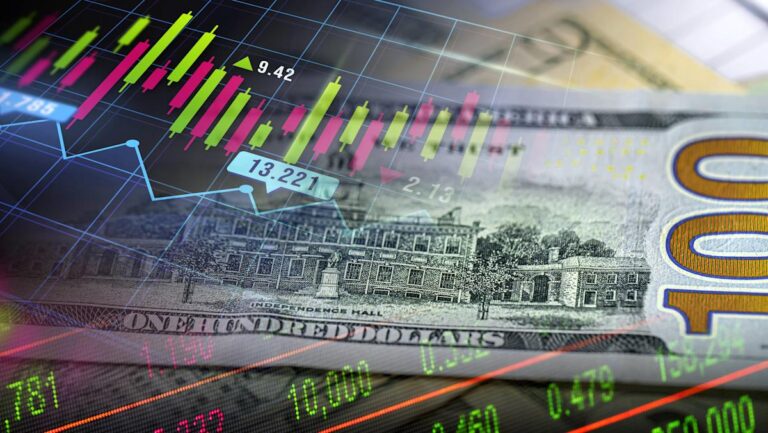00:00:00 Jared Blikre
With global tensions rising, there’s a lot of chatter about the US dollar, which has been the world’s reserve currency since just after World War II. And today we’re going to look at exactly why currency and foreign exchange tickers can look so strange and what their charts are actually saying. I’m Jared Blikre, host of Stocks in Translation. Now, here’s something curious behind me. Check out these two charts from the past five years. Maybe we’ll get to that in a second. We have the euro dollar pair whose symbol is EURUSD equals X, there we go. And the US dollar index, that’s DX-Y.NYV. These are a mouthful. But notice that they’re mirror images of each other. The other one moves up, but the other moves down. So, why do these symbols look so different and what’s the history here? To answer that, we need to define what the so-called forex market is and take a quick trip back to the 1970s. So, foreign exchange or forex, that is a 24-hour global marketplace for banks, businesses, and traders. They swap one currency for another. It sets the exchange rates affecting your vacation costs, import prices, even your investment returns. And it all started August 15th, 1971, when President Nixon closed the gold window, ending the era where foreign governments could convert dollars into gold. By 1973 on this timeline, this led to the collapse of the post-World War II Bretton Woods agreement. And suddenly, exchange rates, they had been fixed, they were moving quite widely. So in 1976, the Jamaica Accords officially legalized and recognized floating currencies, which had already been trading somewhat freely for years. And in 1979, Europe launched its own monetary system to manage volatility. This led to the formal creation of the euro decades later in 1999. So, those events shaped the modern forex market that we see today. Now, what exactly should you know about forex? First, every currency quote has two sides, the base currency first and the quote currency second. And which one comes first is simply a matter of convention that goes all the way back to the 1970s. Take the euro versus a dollar. Each currency in this pair always has three letters that do not change. So, EUR is a euro and USD is the US dollar. Yahoo Finance also adds an equal sign and an X to the end. That highlights that these are forex pairs. Now the current price of the euro dollar is about 1.15. This means that 1 euro buys 1.15. And bottom line, the euro is just a little bit stronger than the dollar. Also, the smallest increment in forex is just 1/10,000th of a unit, 0.0001. And this market never sleeps during the week. It runs nonstop from Sunday evening all the way to Friday afternoon. And some other fun facts, forex is the biggest market on the planet with an eye-watering 7.5 trillion dollars in daily turnover. Also, it’s famous for high leverage. Traders will often borrow 30 to 100 times their money. This means that relatively small daily movements, they can have a huge ripple effect. And when they’re big, watch out, because that volatility in currencies, it can quickly spill into the markets we know well, like bonds and stocks. And finally, the US dollar gets most of the action. It’s on one side of 88% of all trades. The euro is second, appearing about a third of the time, and the yen is next with about 1/6 of the action. That was forex. Now let’s talk about the dollar index. What exactly is an index? The index part is key. And a currency index measures the overall strength of one currency against a weighted basket of others. So there are many. The most famous is the DXY or the so-called Dixie, which you can see in this five-year chart. Its weighting is determined by the euro with nearly 58%. That’s why DXY mirrors the US dollar, the euro US dollar forex pair so closely, but upside down though. And here’s a fun fact. The DXY basket has not been updated since the 1970s and is based on lightly traded futures contracts, which makes it a bit of an antique. And there are several alternative dollar indices, including some by the Federal Reserve. But despite this, the DXY remains an industry standard and an archaic relic that we still tend to use every day. And that’s your currency crash course. Now you know why forex matters and can look so strange even if you never place a single trade. And tune into Stocks in Translation for more jargon-busting deep dives, new episodes on Tuesdays and Thursdays on Yahoo Finance’s website or wherever you find your podcasts.
